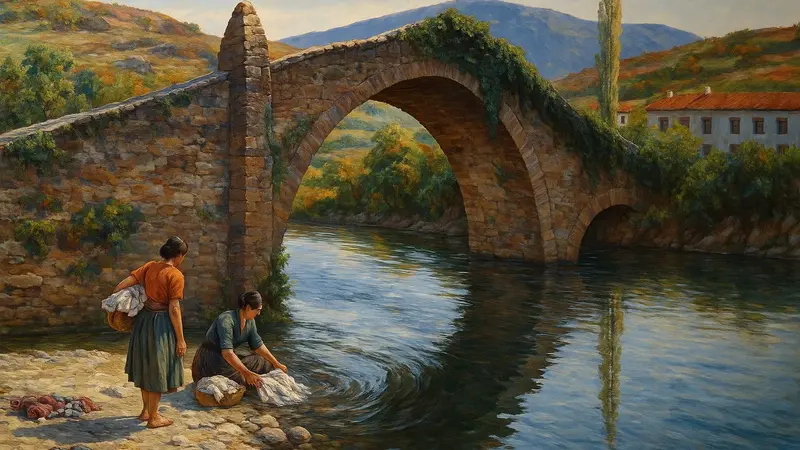Introduction: Understanding Basqueserpartists
Basqueserpartists are among the most fascinating artistic communities in Europe. The word “Basqueserpartists” combines two ideas — the Basque people, known for their strong cultural identity, and artists who have used creativity to express that identity. From the rolling green hills of the Basque Country to the vibrant galleries of Paris and Madrid, Basqueserpartists have played a vital role in shaping modern European art.
Their art often blends tradition and innovation, connecting deep cultural roots with modern expression. In this article, we will explore the history, evolution, and importance of Basqueserpartists, highlighting their most famous works and enduring legacy.
The Origins of Basqueserpartists
The story of Basqueserpartists begins in the Basque Country, a region that spans parts of northern Spain and southwestern France. Known for its language, Euskara, and proud heritage, this region has produced many creative minds over the centuries.
Basqueserpartists emerged as a cultural movement during the 19th and 20th centuries when industrialization and political shifts inspired artists to preserve their identity through art. Many Basqueserpartists painted scenes of rural life, fishing villages, and festivals that reflected their deep connection to the land and people.
At the same time, others turned to abstraction and modernism, mixing European trends with their native symbolism. This balance of old and new defines much of the work created by Basqueserpartists.
The Role of Identity in Basqueserpartists’ Work
Basqueserpartists often focused on themes of identity, freedom, and belonging. Because the Basque Country has its own language, traditions, and political history, these artists saw themselves not only as painters or sculptors but also as cultural ambassadors.
Their art became a powerful way to express what it means to be Basque — proud, independent, and creative. Through bold colors, abstract forms, and local symbols, Basqueserpartists celebrated their heritage while questioning how it fits into the broader European story.
Famous Basqueserpartists and Their Contributions

Several well-known Basqueserpartists’s have made major contributions to modern art. The most famous among them is Eduardo Chillida, a sculptor known for his monumental works made of iron and stone. His pieces often explore the relationship between space, weight, and emptiness — a reflection of both nature and human thought.
Another influential figure is Jorge Oteiza, who merged philosophy with sculpture. His minimalist forms speak to the spiritual and cultural struggles of the Basque people. Together, Chillida and Oteiza helped establish Basqueserpartists’s as a serious artistic movement with international recognition.
Painters such as Ignacio Zuloaga brought Basque realism to European audiences, while Nestor Basterretxea added a modern, almost futuristic touch to the tradition. Each of these Basqueserpartists’s contributed to a visual language that continues to inspire new generations.
How Basqueserpartists Transformed European Art
While rooted in local identity, Basqueserpartists’s were not isolated. They interacted with major European art movements such as Cubism, Surrealism, and Constructivism. By blending these influences with Basque traditions, they created something entirely unique.
Their art often features geometric structures, organic materials, and philosophical reflections. Because of this, many Basqueserpartist’s are now seen as bridge figures who connected rural identity with global modernity.
Moreover, Basqueserpartist’s helped bring attention to the Basque Country as an important center for creative thought. Museums like the Guggenheim Bilbao stand today as proof of how deeply art has shaped the region’s image and economy.
The Influence of Basqueserpartist’s on Modern Design
In addition to painting and sculpture, Basqueserpartist’s have influenced architecture, design, and public installations. Their minimalist yet emotional style has inspired architects to use natural materials like stone, iron, and wood in modern buildings.
This connection between art and architecture is especially visible in Basque cities like Bilbao, San Sebastián, and Vitoria-Gasteiz. Public spaces often include sculptures by Basqueserpartist’s, turning the streets themselves into open-air galleries.
The Cultural Significance of Basqueserpartist’s Today
Even in the 21st century, the influence of Basqueserpartists continues to grow. Younger artists are reinterpreting traditional Basque symbols in digital art, photography, and performance. This proves that Basqueserpartists are not a historical curiosity but an evolving part of modern creativity.
Furthermore, their work plays a key role in promoting cultural tourism. Many visitors travel to the Basque Country not only for its landscapes but also to see museums and exhibitions dedicated to Basqueserpartists.
By doing so, they experience how art and identity remain deeply connected in this region.
Basqueserpartists in the Global Art Scene
Basqueserpartists are not limited to their homeland. Exhibitions of Basque art have taken place in major cities such as New York, Tokyo, and London. These global shows highlight the universal themes of Basque creativity — resilience, nature, and human emotion.
International artists have also collaborated with Basqueserpartists, sharing ideas and techniques. This cross-cultural exchange enriches both sides, proving that local art can have global meaning.
The Artistic Techniques of Basqueserpartists
One of the most remarkable aspects of Basqueserpartists is their use of materials. Many preferred raw, natural elements like metal, stone, and wood, symbolizing the power of the Basque landscape.
Their techniques often involved combining rough textures with clean lines to express contrast — a reflection of the tension between tradition and innovation.
Painting styles among Basqueserpartists vary widely. Some embraced bright, bold colors to depict emotional intensity, while others used muted tones to express serenity and balance. Regardless of their approach, all Basqueserpartists share a passion for connecting the visual world with deeper meanings.
The Philosophy Behind Basqueserpartists’ Art
Basqueserpartists often believed that art should not just be seen but felt. Many of them were influenced by philosophy, spirituality, and the natural world.
Their works invite viewers to pause and reflect — to experience silence and presence. This idea aligns closely with Basque traditions, where nature, community, and respect for space hold special importance.
Modern Basqueserpartists and Digital Innovation
In the digital age, new generations of Basqueserpartists are exploring technology to express their identity. Virtual reality exhibitions, 3D sculptures, and digital painting are becoming part of their creative process.
These modern Basqueserpartists combine tradition with technology, using online platforms to share their culture with the world. By doing so, they make Basque art more accessible and relevant to younger audiences.
The Role of Basqueserpartists in Education and Culture
Art education programs in the Basque Country often include lessons about Basqueserpartists, helping students understand their history and influence.
Local museums organize workshops and exhibitions that encourage young people to create their own interpretations of Basque identity. As a result, Basqueserpartists not only preserve culture but also inspire new forms of creativity.
Visiting Basqueserpartists Exhibitions
Travelers who want to experience the magic of Basqueserpartists can visit several museums and galleries dedicated to their work.
The Museo de Bellas Artes de Bilbao houses important pieces from classic Basque painters, while the Chillida Leku Museum in Hernani is entirely devoted to Eduardo Chillida’s monumental sculptures.
These spaces are more than just art galleries — they are living reminders of how creativity and culture shape identity.
How Basqueserpartists Inspire New Generations
Basqueserpartists continue to inspire artists, writers, and musicians worldwide. Their story is one of perseverance, pride, and imagination.
Because they balance local traditions with universal ideas, Basqueserpartists show that true art transcends borders. This timeless message makes their work deeply relevant in today’s multicultural world.
Conclusion: Why Basqueserpartists Matter
The legacy of Basqueserpartists is not only about beautiful art but also about identity, resilience, and connection. Through their creativity, they have shown how culture can survive and evolve, even in a rapidly changing world.
Their influence reaches far beyond the Basque Country — it touches everyone who values authenticity and artistic freedom. By studying and celebrating Basqueserpartists, we honor both the past and the future of art.
Read more: Discover Lovelolablog Fun Facts – Unique Insights You’ll Love
FAQs About Basqueserpartists
Basqueserpartists are artists from the Basque Country who use their creativity to express Basque culture, identity, and modern artistic ideas.
Basqueserpartists are unique because they blend traditional Basque culture with modern art styles, creating works that are both local and universal.
You can visit museums such as the Guggenheim Bilbao, Chillida Leku Museum, and Museo de Bellas Artes de Bilbao to explore Basqueserpartists’ masterpieces.
Basqueserpartists are important because they brought Basque culture into the global art conversation and inspired new generations of artists worldwide.
Today’s Basqueserpartists use digital tools like 3D modeling, virtual galleries, and online exhibitions to share their work and preserve cultural identity in innovative ways.


